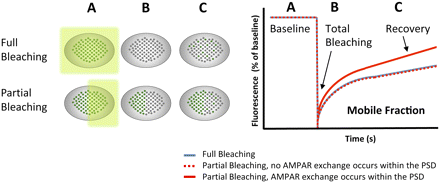AMPA-type receptors (AMPARs) are glutamate-gated channels whose postsynaptic activation convey the major depolarization in brain excitatory neurotransmission. Trafficking of these receptors to and from synapses is tightly regulated in neurons and underlies long-lasting forms of synaptic plasticity. For example, export of AMPARs from the endoplasmic reticulum to the Golgi (Vandenberghe and Bredt, 2004) is suggested to contribute to the expression of certain types of synaptic plasticity (Broutman and Baudry, 2001). In addition, endocytosis removes AMPARs from synapses during LTD (Beattie et al., 2000) and in response to other stimuli (Man et al., 2000). Internalized AMPARs can be degraded in lysosomes or recycled back to the surface membrane (Ehlers, 2000; Gruenberg, 2001). This AMPAR sorting is regulated by synaptic activity (Ehlers, 2000) and provides the local intracellular pool of AMPARs needed for LTP expression (Park et al., 2004). AMPARs also undergo constitutive trafficking that involves both exocytic delivery from intracellular compartments (Gerges et al., 2006) and fast exchange with surface extrasynaptic receptors through lateral diffusion (Tardin et al., 2003). Still, knowledge is lacking regarding the organization and regulation of AMPARs within the postsynaptic density (PSD) and the events triggering their repositioning.
